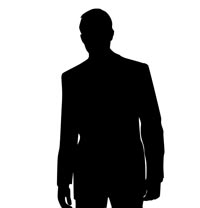
Recently, an attorney at the O’Malley Law Office had trial on an Attempted Unlawful Sexual Contact case. The client had been picked by the alleged victim out of a police photo lineup. But, on the stand, the young woman was unable to identify the man who allegedly tried to assault her – she told the DA he was “not in the room” after looking right at him. We won the trial, and afterwards, we were speaking with our client, who had seen the photo lineup in evidence. He was of Asian descent, and he told us he was upset by the photo lineup, because it was inaccurate – the men in the photo didn’t look like him at all. He stood out – which is why he believed the young woman chose him. This led us to look into how police photo lineups are conducted across the country. We were shocked to discover how inaccurate they really are. In this blog, we’ll discuss what we learned.
[pullquote align=”center” textalign=”center” width=”90%”]We were shocked to find how inaccurate photo lineups can be.[/pullquote]How Police Departments Conduct Photo Lineups
There are a few different ways to conduct photo lineups. The merits and disadvantages of each option have been discussed and debated over the past few years. In every type of lineup, a few instructions are read to the witness or alleged victim. Included in these instructions is an explanation that the suspect may or may not be included in the lineup. This gives the witness permission to not identify someone simply because they believe they have to. In most lineups, there are five “fillers” and one of the photos is the suspect.
– Simultaneous Photo Lineup
The simultaneous photo lineup is done by grouping six people together on one page. The problem with this type of photo lineup is that witnesses often compare each photo to the others, as opposed to simply recalling their memory to identify the person. They end up picking the “best option” as opposed to what they can remember.
– Sequential Photo Lineup
The sequential photo lineup is done by showing the witness six people one after the other. This eliminates the possibility of a person comparing the photos to each other, but it offers another problem. Often, the investigator conducting the lineup will know who the suspect is. Subconsciously, they may offer clues to the witness, such as pausing longer on that specific photo, or asking again “are you sure you don’t recognize this person?”
– Double-Blind Photo Lineup
The double-blind photo lineup is done by showing the witness six people one after the other, with the added benefit of using an investigator completely unrelated to the case conducting the lineup. This way, the police officer won’t know who the suspect is, and therefore won’t subconsciously affect the witnesses’ decision.
[pullquote align=”center” textalign=”center” width=”75%”]Photo lineups are often conducted in a faulty way.[/pullquote]How Mistakes are Made in Photo Lineups
After researching how photo lineups are conducted, I realized our client was right. The photo lineup conducted in his case was done using the simultaneous lineup method – six men, all in a row, with him in the mix. We believe the young woman chose him simply because he was the best pick out of the bunch – not because he actually committed the attempted assault. As criminal defense attorneys in Larimer, Jackson, and Boulder County, we understand how important it is to question police photo lineups in criminal cases. Innocent people have gone to prison after being falsely accused – we don’t want that to happen. We fight hard for the rights and freedoms of our clients.
